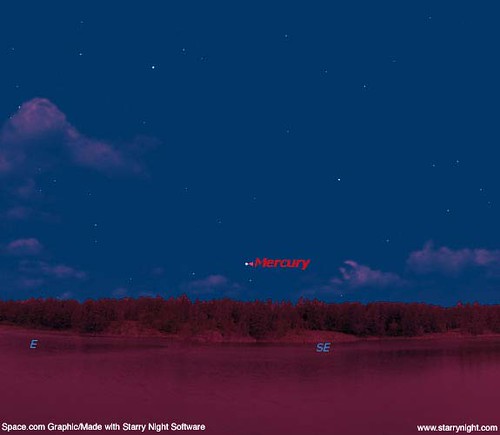Crazy About Mercury

The elusive planet, as Mercury is sometimes known, will be less elusive in the coming weeks. Space.com reports:
Often cited as the most difficult of the five brightest naked-eye planets to see, because it’s the planet closest to the Sun, Mercury never strays too far from the Sun’s vicinity in our sky.
Mercury is called an "inferior planet" because its orbit is nearer to the Sun than the Earth’s. Therefore, it always appears from our vantagepoint to be in the same general direction as the Sun. Thus relatively few people have set eyes on it; there is even a rumor that the great Polish astronomer, Copernicus, never saw it. Yet it’s not really hard to see. You simply must know when and where to look, and find a clear horizon.
And during these next two weeks we will be presented with an excellent opportunity to view Mercury in the early morning dawn sky [map].
In fact, if you’ve been an early riser this past week, it’s quite possible you might have stumbled across Mercury on your own. Since Nov. 20, it has been rising at least 90 minutes before sunrise, which is also just about the same time that morning twilight is beginning. If you scan low along the east-southeast horizon about 45 minutes before sunrise, Mercury has been visible as a distinctly bright, yellowish-orange "star."
The best views of Mercury, however, are reserved for this weekend, as Mercury will be rising more than 100 minutes before the Sun. This is even before the break of dawn, so for a short while at least, Mercury will be visible against a completely dark sky.
Early to bed and early to rise — will, if nothing else, grant you a rare opportunity for a good glimpse of the planet. So get to bed early this week!